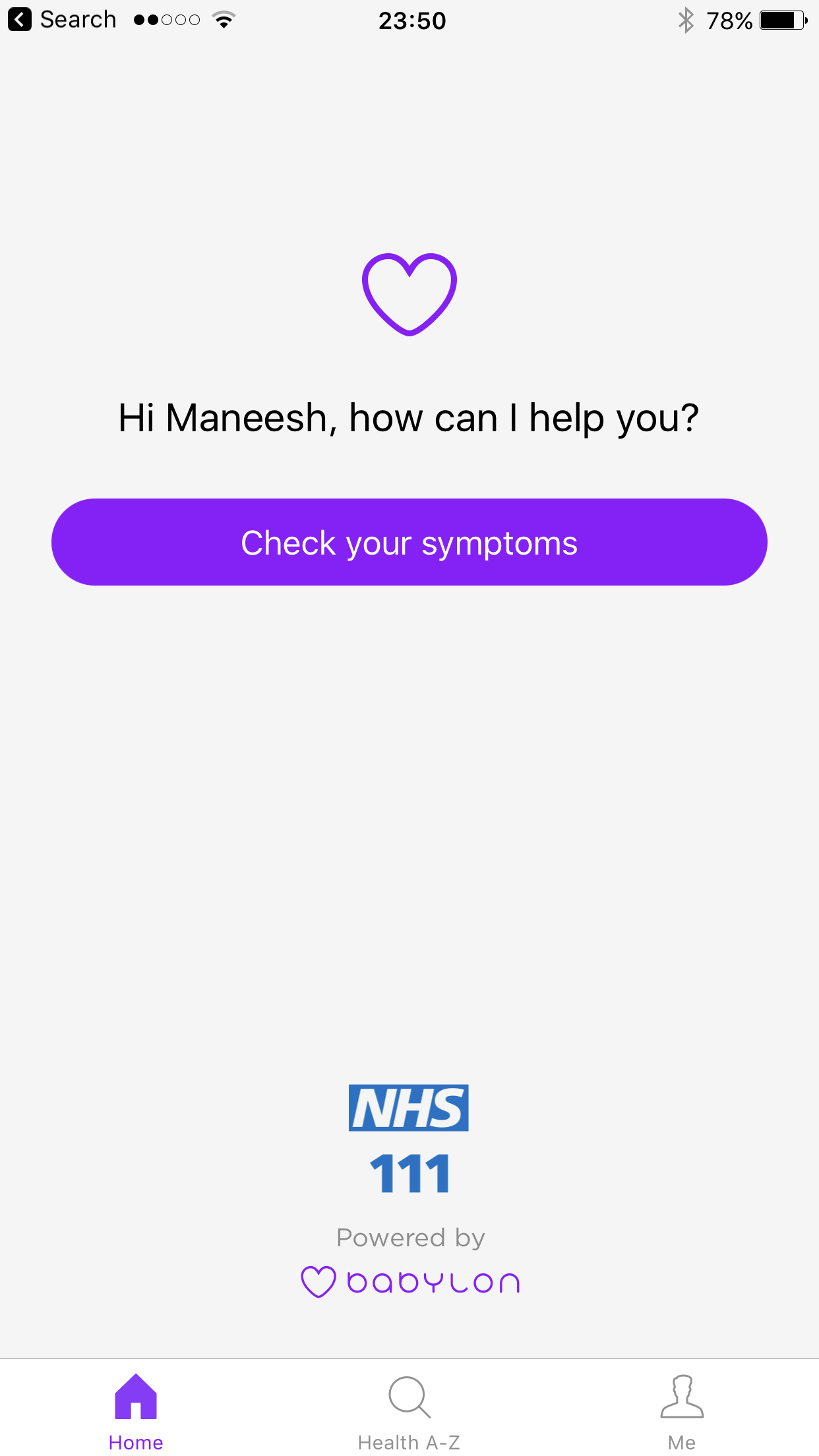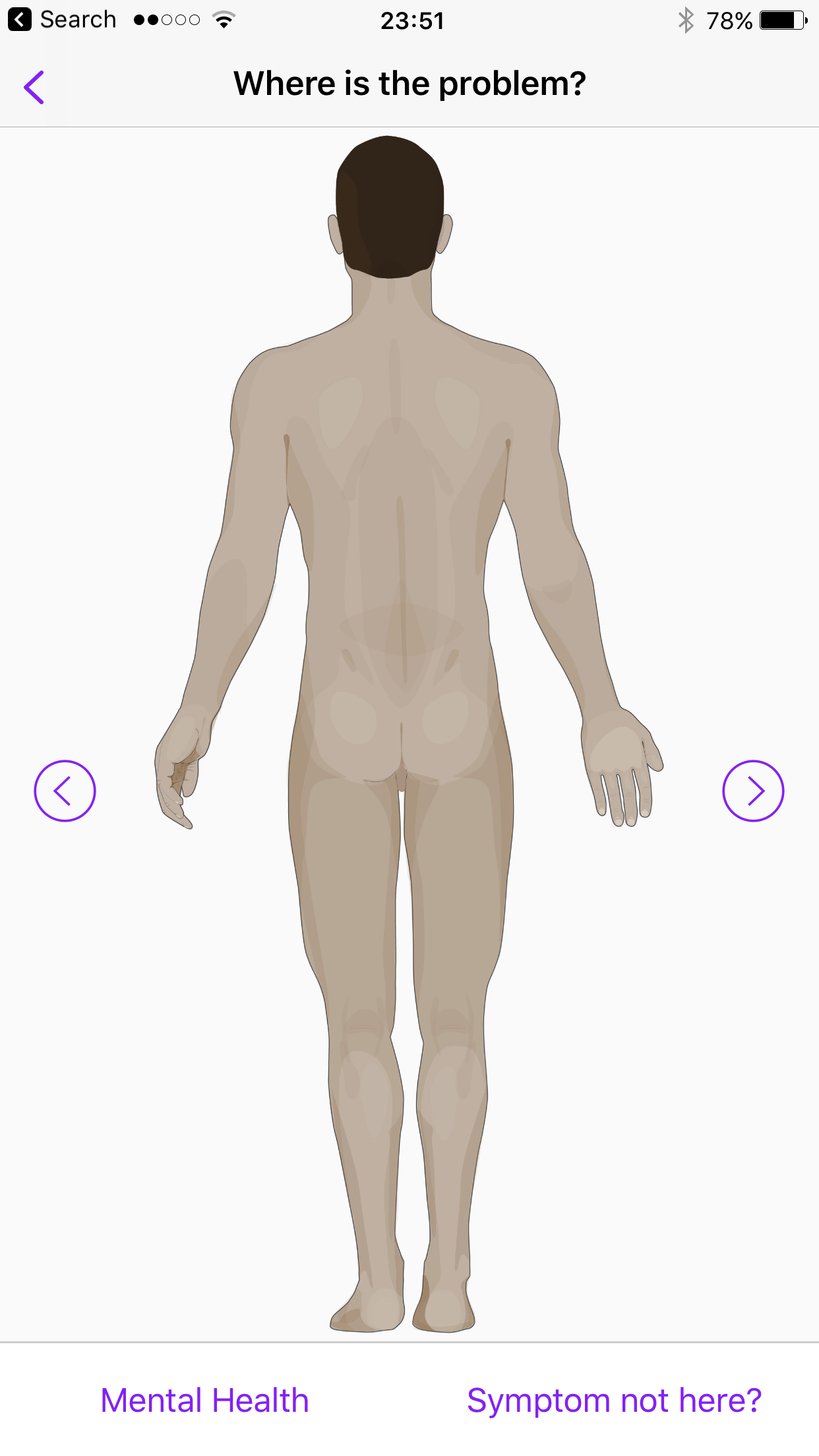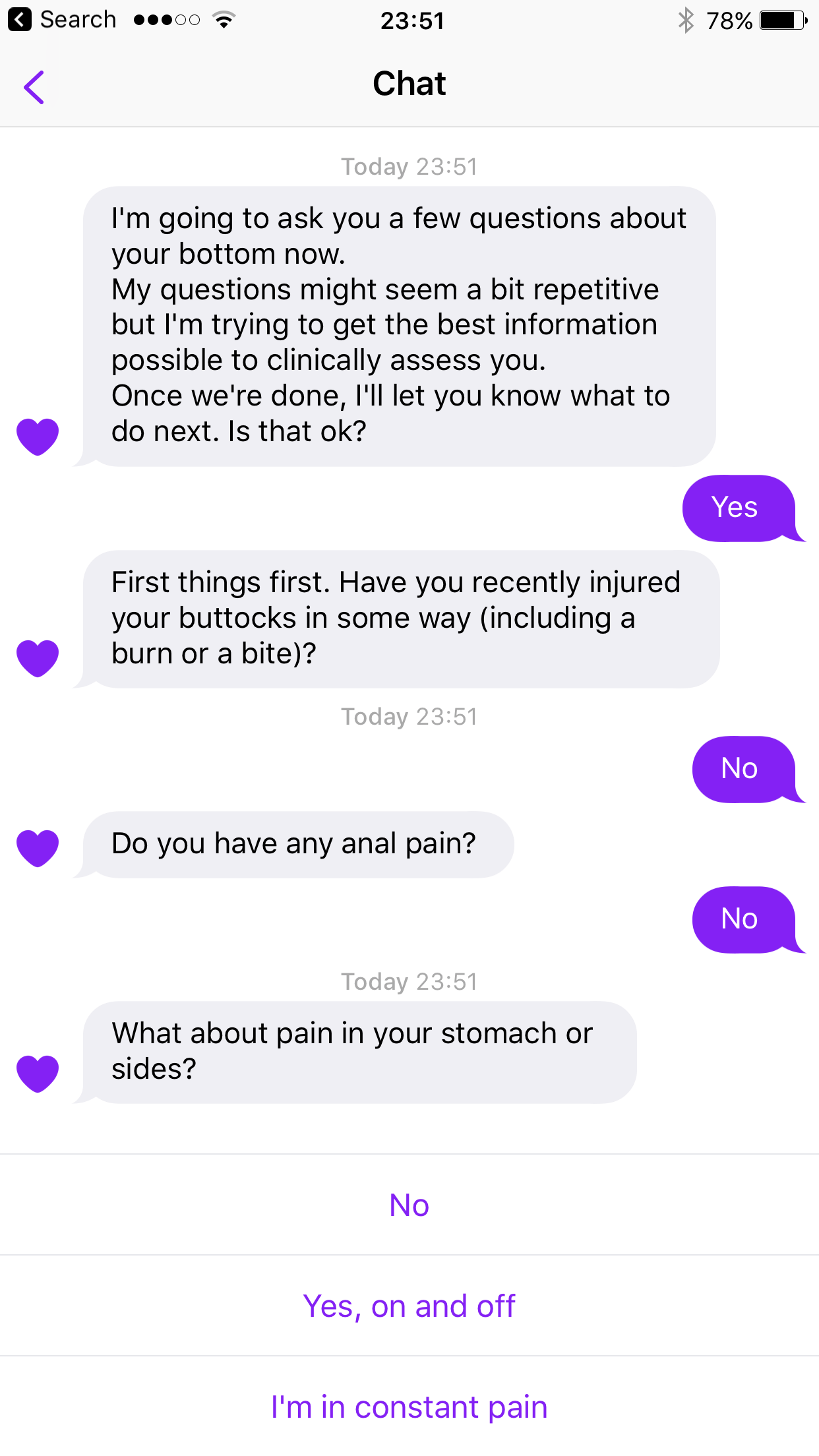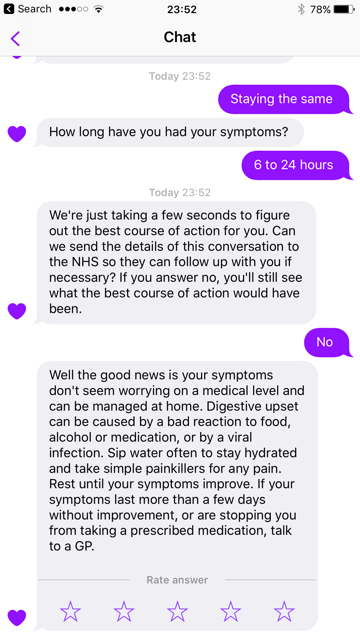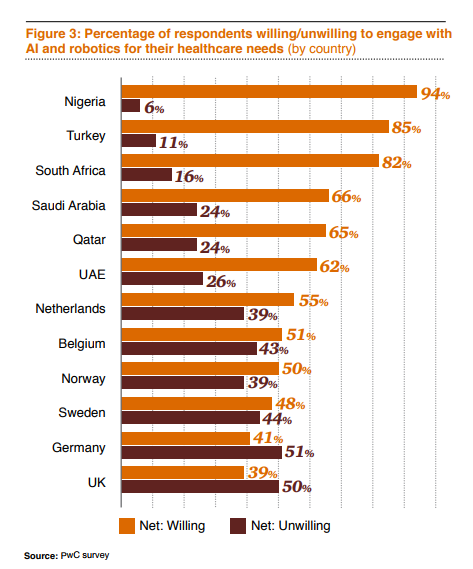Zooming Out: From Digital Health to the Health of the Planet
Last year was a year of turbulent transition for me, both personally and professionally. It was a year in which I adapted to a new reality after my father had died (and I began to realise just how much he had meant to me), as well as adapting to my shift from in my working life, from looking at the future of Digital Health to looking at the future of Planetary Health. In this post, I’m going to write about the latter.
In terms of writing, I intend to return to blogging. I’m not sure why I lapsed years ago, when it comes to writing regular blog posts. It may have been because I was finding X (formerly known as Twitter) to be a useful way of sharing my ideas and engaging with others, and I even lapsed on tweeting regularly last year, so I intend to get back on there, in terms of sharing my ideas about the future. Finally, in this era where so much written content seems to be AI generated and often sounding increasingly generic, I felt like writing blog posts as a human being (without relying on any AI tools) might help my voice to stand out in this AI era of content creation.
It’s been almost 13 years since I left the security of my career and jumped into the unknown by setting myself up as a Digital Health Futurist (you can read more about that transition in my first blog post that I wrote back in 2013). That part of my career has been so rewarding, helping leaders across healthcare think differently about the future, and enabling them to take steps towards understanding what trends in digital health means for their own organisations, as well as for the patients they serve. Now something began troubling me in 2023, as I looked at the quest to digitise every aspect of healthcare, to collect, share and analyse as much health data from our lives as possible, to use AI to predict, prevent and prioritise, all over healthcare and the pharmaceutical industry. I came across this paper, on “The Environmental Impacts of Digital Health” and here is what made me stop and think;
“However, the global environmental implications of digital health have been overlooked. This commentary draws attention to the environmental impacts of digital health devices and communication networks, as well as the data produced by digital health activities. Unless serious attention is paid to greening digital health practices, the rise of digital health will significantly contribute to environmental change, and thus create outcomes of ill-health.”
Then I realised back in 2023, this wasn’t being discussed at digital health events, it wasn’t part of the conversation when people were talking about innovation in healthcare and pushing boundaries. A year after the launch of ChatGPT, many were excited about the potential for tools like this to make a huge impact in healthcare, yet hardly anyone seemed to be questioning the impact on the planet from these resource hungry technologies, in terms of increased emissions & energy/water usage. So then I got thinking, if this is missing from the conversation, how do I use my voice to get more leaders thinking about the future, from a wider perspective?
Sustainable healthcare isn’t a novel concept though. Here in the UK, NHS England was the first health system in the world to commit to Net Zero emissions. Then you have organisations like the Centre for Sustainable Healthcare that have been at the frontiers since 2008. Despite this noble work, there is still a lot that we need to understand. Consider this working paper published in March 2024, by the UK Energy Research Centre asking “What is the carbon footprint of digital healthcare?” and they summarise the situation as;
”The analysis reveals that while digital healthcare technologies (DHTs) offer avenues for reducing emissions—such as telehealth reducing the need for patient and clinician travel—they also entail significant environmental costs through the manufacturing and operation of digital infrastructure. The study underscores the necessity of developing an open and shared database of carbon factors for healthcare systems, standardising methodologies for calculating carbon impact, and undertaking both pre-implementation estimations and post-implementation realisations to better manage DHTs’ carbon footprint.”
So we just have to work towards decarbonising healthcare (and every other sector) and we have a chance of mitigating climate change by reducing our emissions from human activities, right? So I just needed to pivot to looking at the future of sustainable healthcare in my work. Actually, not quite.
The way I see it, sustainability is simply about minimising the harm from human activities, where we need to move to a regenerative future, where our activities as humans regenerate nature. Furthermore, the impact from how we live, work and play, on human health (and our every day lives) is much broader than simply more extreme weather due to climate change. This led me to discovering the relatively new discipline of Planetary Health, which a decade ago, The Rockefeller Foundation–Lancet Commission on planetary health, stated “The concept of planetary health is based on the understanding that human health and human civilisation depend on flourishing natural systems and the wise stewardship of those natural systems. However, natural systems are being degraded to an extent unprecedented in human history.”
Essentially, our health is linked to the health of the planet.
Then I came across the concept of the 9 planetary boundaries (climate change is just one of them), which illustrates the complex interconnections when it comes to Planet Earth, and the impact on everything that lives on the planet, including humans, and that we need to step back from the narrow lens through which we view the future, to be able to zoom out and understand the bigger picture. Scientists who have quantified these boundaries have shown that we have transgressed 6 of these 9 boundaries, and we need to respect all 9 planetary boundaries, not just for humanity today, but for those yet future generations yet to be born.
The 2023 update to the Planetary boundaries. Licensed under CC BY-NC-ND 3.0. Credit: "Azote for Stockholm Resilience Centre, based on analysis in Richardson et al 2023"
Everything I read about Planetary Health really broadened my thinking, above and beyond simply switching my focus to the decarbonisation of healthcare and making it more sustainable. So in October 2023, I made the decision to move from working as a Digital Health Futurist to a Planetary Health Futurist. So 2024 was about repositioning myself when it comes to my work, about learning from others, and about seeing problems (and the resulting opportunities) through the lens of Planetary Health. Throughout my career (even when I had jobs), I used to spot signals quite early on and would act upon those signals, in terms of taking a risk and trying something new. I must say that after making the switch, I still had a few doubts about this new chapter of my career, in terms of, are organisations I work with, ready to listen to keynote speeches about planetary boundaries and regenerative business models? However, about a year after I made this switch, Stanford University launched a Center for Human and Planetary Health. So momentum in the field is building. When I look at some of the pioneers who have been researching and advocating for Planetary Health for a long time already, one of those is Sam Myers, who was one of the founders of the Planetary Health Alliance back in 2015, and he now leads the Johns Hopkins Institute for Planetary Health, that was launched in April 2024.
My own quest in 2024 to build new connections, exchange ideas and to understand as much as possible in Planetary Health, led me to the Planetary Health Summit in April 2024, held at Sunway University in Kuala Lumpur, Malaysia.
The first thing that blew me away when was Professor Jemilla Mahmood, Executive Director of the Sunway Centre for Planetary Health, spoke at the launch of the meeting, and mentioned the cost of when countries start wars (given we have ongoing conflicts around the globe), in terms of having not just an impact on human lives, but on the health of the planet, given how carbon intensive military operations can be. I looked into this a bit further, and estimates are that militaries around the globe are responsible for 5.5% of greenhouse gas emissions (and we need to be reducing GHG emissions to combat climate change, amongst other things) To put this into context, if all the world’s militaries were a country, they would be the 4th biggest emitter in the world! Now we have an additional reason for working towards a peaceful, stable and secure world.
The next insight was hearing stories of loss from people that I normally wouldn’t meet, especially since most of my work in digital health has taken me to events in North America and Western Europe. Before Professor Mahmood’s speech, I was chatting to two young women from the Philippines sitting next to me in the hall. They had told me how their hometowns had been impacted by Typhoon Haiyan back in 2013 (one of the worst to ever hit the Philippines) and claimed over 6,300 lives. So during Professor Mahmood’s speech, when she urged us that we need from simply talking to action when it comes to safeguarding the health of the planet (and those that live on it, humans included), the two young women had tears in their eyes, as they were so moved by the call to action, when a lot of the time, they have felt like nobody was doing much around the world to reduce the chances of even more extreme weather events in the future. Witnessing these raw emotions motivated me to double down on my efforts in Planetary Health upon my return to the UK.
The third insight was in a session entitled, “Beyond Growth and GDP: From Profit to Wellbeing” and before this event, I had been caught in the trap of believing, all we need to do is to make everything we do, sustainable, e.g. switching from a petrol/diesel car to an electric vehicle, or reducing meat consumption, or decarbonising heavy industries. That’s where the talk by Dr Dave Webb who argued that “sustainability in business isn’t enough, and that we need to move to regenerative business, rather than simply minimising negative impact” – Kate Raworth was speaking in another session on Regenerative Economics, where she illustrated the regenerative vision in manufacturing, with factories as forests. These two talks completely moved the needle I wanted to have with people in the future, urging them to think beyond sustainability.
The fourth insight was from Dr Britt Wray introducing us to the concepts of eco-anxiety and ecological grief and there is so much to consider when it comes to supporting people who are advocating for transformative change. I was alarmed when talking to people in coffee breaks, that some people who have been fighting for a long time for in various aspects of Planetary Health and for taking on corporations, governments and other powerful entities have faced threats of violence and even death, simply because they are giving “nature” a voice in society, when nature is typically screaming with pain, and decision makers are deaf to those screams.
The final insight was the magical conversations with young people, from countries that usually have little representation at the events I’ve been to in the past. People like Dr Hashim Hounkpatin from Benin, and Maison Ole Kipila who is from a Masai tribe in Kenya. Speaking to each of them and hearing the stories of how their communities (especially in rural areas) have been impacted by human activities was a wake up call. However, I’m encouraged by their sense of wanting justice for their communities, and having the courage to want to fight for a better future, for a livable planet for everyone, no matter where they live. This left me wanting to reframe my own perspective in my own work to think broader. I read that by 2050, one in four people on this planet will be African.
Dinner with Dr Hashim, Maison and others I met from the Planetary Health Summit
My work revolves around telling stories about the future to decision makers. So how could I weave the insights and novel ideas I’ve been learning about in Planetary Health into the stories I tell when I am on stage? A wise friend in San Francisco urged me to bring my existing audience along with me in this chapter of my career, in terms of audiences from across healthcare. Find a way to connect the dots and bring people with you, he reminded me.
I got my first chance last summer at the Radical Health Festival in Helsinki, Finland. My closing keynote was on “Planetary Health: If nature had a voice, what would it demand from health systems?” and not only did I learn a lot whilst doing my research to prepare for the keynote, but the feedback I got from the audience afterwards was really positive too, and all those doubts about whether jumping from digital health to planetary health disappeared.
Broadening my outlook has made me realise that what happens around the globe can impact not just the planet, but what happens far away, could impact us, wherever we live, in terms of rising levels of pollution, emissions, and more. Take India for example, with a population of 1.4 billion, and an ambitious plan to grow the economy in such a way, that they can become a developed nation by 2047 (100 years since independence from the British) - a vision known as Viksit Bharat. The question I have is how does India achieve this, in harmony with nature, and not follow the extractive, destructive and polluting practices that “developed” countries today have followed in their quest to develop? It’s encouraging to hear the Indian economist, Shamika Ravi, remark, "We must grow in a way in which the world, the earth at large, is not affected adversely. And therefore, we aspire to have growth, which is more, not just equitable, but also sustainable.”
For example, one of the key pillars of this transition to Net Zero is the energy transition, away from fossil fuels to renewable and low carbon energy sources. It’s what led me to attend the FT Energy Transition Summit that was the first time the FT has run this event in India, a few months ago. How quickly India can make this transition impacts not just lives in India, but around the globe. Whilst I was in India, I hosted my own keynote session in Mumbai, “A New Era of Human Existence: Longevity and Planetary Health” looking at trends in people living longer in India but the impact of this on everything, from healthcare to the environment, in terms of resources consumed. I read a stat predicting that between 2000-2050, the fastest growing demographic in India, will be the 80+ group, set to grow by 700% during that time period. In a visit to Delhi, I got to experience just how hazardous the air quality was late last year when a number of factors led to air quality so bad, I needed to wear a N95 mask just to be able to breathe without any issues, whilst walking outdoors. I’ve got some more thoughts about India and Planetary Health will I’ll share in my next blog post.
So back to healthcare audiences, and one of the most exciting applications of AI tools is going to be in healthcare, not just in how a patient gets diagnosed or treated, but behind the scenes in a hospital lab, or in clinical trials and how new drugs come to market. However, if we deploy and scale AI tools (which are increasingly resource hungry) the way many are planning, we face the risk of worsening human health by worsening planetary health. At the UCLA Biomedical AI symposium last month, I delivered a deep dive on “Beyond Bias: Envisioning a Sustainable and Equitable Future for AI in Biomedicine” and looking at approaches to AI in healthcare that would help to mitigate bias and reduce the carbon footprint of those AI solutions, at the same time. I highlighted during my session to leaders from across Los Angeles, the urgent need to look at new AI solutions through the lens of Planetary Health, as not doing so could take us even further out when it comes to transgressions of planetary boundaries, including climate change. Then just a short while after I’ve been talking about that, Los Angeles has experienced the terrible wildfires. A powerful reminder of the need to act now.
Tomorrow, the eyes of the world will be on the United States, where President Trump will be returning for his second term in office. There is fear that based upon what’s he has said so far, new policies on oil and gas, could well undermine progress that the United States has made until now, but could also send a signal to other nations, that short term individualistic priorities are more important considering the needs of the planet, the 8 billion humans that live on it, and those that are yet to be born. We shall have to see what happens tomorrow.
There are people in the United States who care deeply about Planetary Health though, and they will be making their voices heard loud and clear in Washington, DC this year, regardless of what gets announced tomorrow. I’m talking about the convention in March 2025 called “Our Planet, Our Health” and a host of organisations are collaborating to host the largest event on planetary health/climate and health to date. One thing has become even clearer to me during 2024, and if we want to have a chance of a more hopeful future, we have to come together and make our voices heard, and be agents of change, for the change that we dream of.
I want to close this blog post on a positive note when it comes to the future. I came across something called the Regenerative Architecture Index, which “benchmarks practices’ progress in the move towards regenerative practice and projects. It recognises the need for a built environment that isn’t merely reducing its negative impacts, but has positive impacts for today and the long term.” It’s amazing that more and more people are thinking beyond sustainability and about a regenerative world. Oh wait, it gets better. Further down their website (see image below), look at the criteria they are using for the benchmarking.
Imagine if every leader on the planet considered the needs of 7 generations ahead when making decisions? Naturally, this has to be balanced alongside meeting the needs of those alive today, but this is the kind of new types of approaches I’m on the lookout for and wanting to share with you, as I continue my own journey exploring Planetary Health, and what these changing trends mean for leaders in any sector, not just in healthcare.
Which country might be the first to appoint a minister for Planetary Health in the next 5 years? I suspect given some countries are disproportionately impacted by transgressions of the 9 planetary boundaries, this kind of radical leadership is likely to come from a country in the Global South.
For 2025, one of my core themes of research will be looking at how we restructure how we live, work and play, to have this better future. This transition to a better future for all won’t be linear, it won’t be easy, and it won’t be cheap, but it’s the right thing to do. Each of us should consider ourselves a Planetary Steward.
I also believe that this is about involving people across society in these conversations about the future. This isn’t about the state restricting all of your choices on a daily basis, or making you feel guilty or ashamed because of your behaviour. Yes, we do need to change how we behave in society (and shaming people into changing behaviour is not healthy!) but at the same time, it’s about employing systems thinking, as we have these large interconnected systems that need to be transformed to enable this transition to occur. Understanding people’s fears, concerns and hopes for the future is critical. It’s not a case of a few people at the top dictating how you can live your life or run your business. The transformation to a healthier future for the planet and every species on it, including humans, is a complex process that will intertwine the social, cultural, political and economic strands that make up our increasingly globalised world. It’s not just about the technology, it never was.
In addition, I’m also looking at how we enable this shift to a nature centred regenerative economy and how do we translate a lot of this research, frameworks and concepts into practical tools that can underpin this shift.
Whether it’s new business models, new types of governance or new definitions of growth, I’ll be sharing my insights, ideas and experiences with you and I look forward to learning from each of you too!
[Disclosure: I have no commercial ties to any of the individuals or organizations mentioned in this post. This post was written entirely by me with no assistance from any AI tools]







